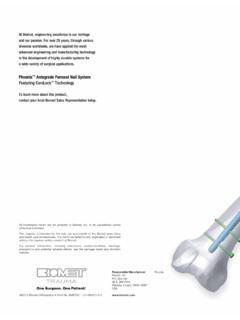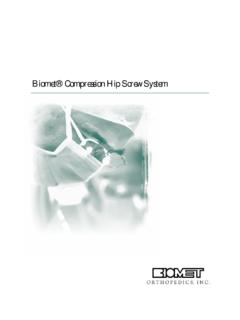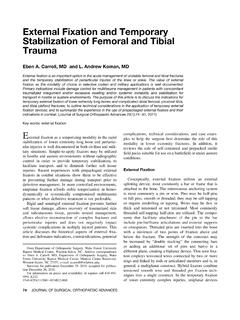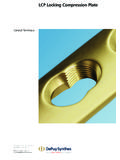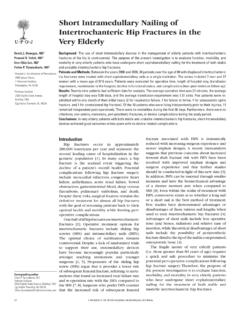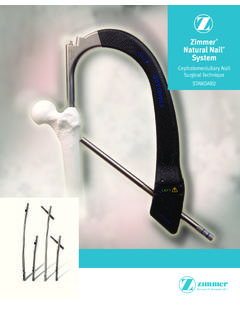Transcription of Phoenix Retrograde Femoral Nail System Featuring ...
1 At Biomet, engineering excellence is our heritage and our passion. For over 25 years, through various divisions worldwide, we have applied the most advanced engineering and manufacturing technology to the development of highly durable systems for awide variety of surgical Retrograde Femoral nail System Featuring CoreLockTM TechnologyTo learn more about this product, contact your local Biomet Sales Representative today. 2013 Biomet Orthopedics Form No. REV011513 All trademarks herein are the property of Biomet, Inc. or its subsidiaries unless otherwise material is intended for the sole use and benefit of the Biomet sales force and health care professionals. It is not to be redistributed, duplicated or disclosed without the express written consent of product information, including indications, contraindications, warnings, precautions and potential adverse effects, see the package insert and Biomet s ManufacturerBiomet, Inc.
2 Box 58756 E. Bell DriveWarsaw, Indiana 46581-0587 TechniquePhoenix Retrograde Femoral nail SystemFeaturing CoreLock Technology Each nail features CoreLockTM Technology, a preassembled embedded locking mechanism that allows four distal screws to be mechanically locked to provide enhanced distal Femoral fixation Distal screws can be removed without disengaging the embedded setscrew since the holes within the setscrew are .. Page 1 Indications And Contraindications .. Page 2 Design Page 3 Surgical Technique .. Page 6 Product Ordering Information .. Page 21 Further Information .. Page 241 IntroductionThe Phoenix Retrograde Femoral nail System features CoreLock Technology, a preassembled, embedded locking mechanism that allows the four distal screws (2- transverse and 2-oblique) to be mechanically locked to provide enhanced distal Femoral fixation.
3 This universal Retrograde Femoral nail is composed of titanium alloy that incorporates a radius of curvature and a 5 distal bend, that is initiated at 45mm from the driving end. Nails are available in outer diameters of 9mm, , 12mm and for applications in a wide variety of patients in lengths of 240mm-460mm in 20mm increments. Additionally, the System features a strong, lightweight Radiolucent Targeting Arm that permits radiographic visualization in multiple planes and allows for accurate transverse and/or oblique targeting. With its easy to use color-coded instrumentation conveniently contained in a single tray and its innovative implant design, the PhoenixTM Retrograde Femoral nail System is designed to address both patient and surgeon and ContraindicationsINDICATIONSP hoenix Femoral nail SystemThese devices are to be implanted into the femur for alignment, stabilization and fixation of fractures caused by trauma or disease, and the fixation of femurs that have been surgically prepared (osteotomy) for correction of deformity, and for Patient conditions including blood supply limitations, and insufficient quantity or quality of Patients with mental or neurologic conditions who are unwilling or incapable of following postoperative care Foreign body sensitivity.
4 Where material sensitivity is suspected, testing is to be completed prior to implantation of the Features5 Bend30mm45mm22mm14mmTransverse ScrewOblique ScrewOblique ScrewTransverse ScrewR : Views are not to scale and should be used for reference 20 15mm20mm40mm38mmA/P ViewLateral ViewDesign Features (Continued)4 nail diameters and length: 9mm, , 12mm and Offered in lengths ranging from 240mm - 460mm (20mm increments) Distal diameter for 9mm, , and 12mm nails is 12mm Distal diameter for nail is 9mm 12mm The PhoenixTM Retrograde Femoral nail features CoreLockTM Technology, a preassembled embedded locking mechanism that allows the four distal screws to be mechanically locked to provide enhanced distal Femoral the holes within the embedded setscrew are grooved, distal screw removal can be achieved without disengaging the embedded Inserter Connector retains head of end cap to facilitate easier insertion.
5 End Caps offered in 0mm, 5mm, 10mm, 15mm and 20mm Screw Lengths:20mm 60mm(Available in 2mm increments)65mm 110mm(Available in 5mm increments) Inserter Connector (Long & Short) retains head of screwInterior of screw head is threaded for retention to inserter5mm Double-Lead Thread Screws- Composed of Titanium Alloy- Features a double-lead thread design for quick insertion- Self-tapping tip- Interior of 5mm cortical screw head is threaded for secure retention to inserter- Threads are closer to screw head and screw tip for better bicortical purchase- Color-coded light greenSurgical Technique6 Step 2. IncisionIncise a 3-4cm midline incision from the inferior border to the patella. Next, perform a medial parapatella capsular incision and retract the patellar tendon laterally. Articular cartilage should be visualized to allow for irrigation and removal of reaming debris.
6 Alternatively, the patella tendon can be 1. Patient Positioning And PreparationPlace the patient supine on a radiographic surgical table. Support the affected limb with a radiolucent triangle to a 45 degree angle. Underside of table should be free to navigate a C-arm freely distally and proximally up to the intertrochanteric region for AP and lateral x-rays. Try to reduce the fracture as best as possible before starting procedure. Distraction may be maintained by a distraction device. Alternatively, hang the affected limb over the end of the surgical table and place the unaffected limb and a support device out 45 degrees from the midline. Prior to nail insertion, intra-articular fragments should be reduced and secured with interfragmentary screw fixation. While securing the fragments, care should be taken to keep in mind the path of the nail .
7 7 Insert the Entry Trocar (Catalog #14-442098) into the Working Channel Soft Tissue Sleeve (Catalog #41029). A x 460mm COCR Threaded Tip Guide Wire (Catalog #14-441054) is placed through the trocar assembly and advanced into the distal Femoral metaphysis, verified with AP and lateral radiographs. Remove the Entry 3. entry PointThe entry point is located in the intercondylar notch anterior and lateral to the Femoral attachment of the posterior cruciate view of guide wire insertedLateral view of guide wire insertedSurgical Technique (Continued)8 Alternatively, a Curved Cannulated Awl (Catalog #41026) attached to a Modular T-Handle, Non-Ratcheting (Catalog #29407) can be used to obtain the entrance desired, the Trocar Interlock (Catalog #14-442014) can be inserted through the cannulation of the Curved Cannulated Awl, to provide an impact surface and help prevent penetration of bone debris into the 4.
8 Opening The Medullary CanalAdvance the One-Step Reamer (Catalog #14-442002) through the Working Channel Soft Tissue Sleeve, over the Threaded Tip Guide Wire to enlarge the entry side and drill until entering the : The one-step reamer has a groove on the cutting flutes to indicate, under radiographic visualization, the proper depth to accommodate the distal outer diameter of the on cutting flute of one-step reamer9 Step 5. fracture Reduction And Guide Wire PlacementFracture reduction is performed manually, with use of radiograph images to aide with positioning. If the canal is to be reamed, a x 98cm Bead Tip Guide Wire (Catalog #27922) is inserted into the intramedullary canal and advanced past the fracture site, into the proximal femur . Confirm position of Guide Wire to be center center in the AP and lateral help facilitate Guide Wire passage through the fracture site, the Keyless Chuck T-Handle (Catalog #14-442078) can be used.
9 Surgical Technique (Continued)10In the case of a non-union, where the path to the canal is blocked and unlikely to advance a guide wire or entry reamer across the fracture site, a Pseudarthrosis Pin Straight (Catalog #14-442073) or Curved (Catalog #14-442074) can be used to create an opening for the passage of a guide wire for canal the event of a difficult fracture reduction, the fracture Reducer (Bowed) (Catalog #14-442068) can be used to facilitate Guide Wire insertion and fracture reduction. In patients with tight canals, reaming to may help facilitate passage of 6. Determining nail LengthA second Guide Wire of equal length can be used to measure the length of the medullary canal or a Medullary Canal and Length Estimator (Catalog #14-442075) can be used to determine nail diameter and length.
10 The appropriate nail length should be inserted passed Blumensaat s Line and usually approximating 1cm proximal to the lesser trochanter. The 98cm Telescoping nail Measuring Gage (Catalog #14-440067) is placed over the Bead Tip Guide Wire with the foot resting on the articular surface. With the Guide Wire resting in the desired proximal femur , the telescoping tube is extended to the end of the Guide Wire. To measure nail length, a direct reading can be made at the junction of the two tubes. The nail should be countersunk to prevent any impingement. The nail length chosen should be at least 1cm shorter than the measured medullary canal to allow countersinking of the Technique (Continued)12 Step 7. Intramedullary ReamingUpon attaching the 8mm diameter Modular Reamer Head to the Flexible Nitinol Reamer Shaft (52cm-Catalog #27940), begin reaming over the Bead Tip Guide Wire in increments to a size greater than the diameter of the nail to be head diameters available from 8mm to 16mm ( increments) NOTe: The 8mm reamer head is the only forward cutting reamer head; all others are medullary canal reaming, the Wire Pusher (Catalog #41027) can be used to help retain the Bead Tip Guide Wire during reamer : Since the Bead Tip Guide Wire will pass through all PhoenixTM Retrograde Femoral nail diameter cannula, an exchange technique is not 8.

